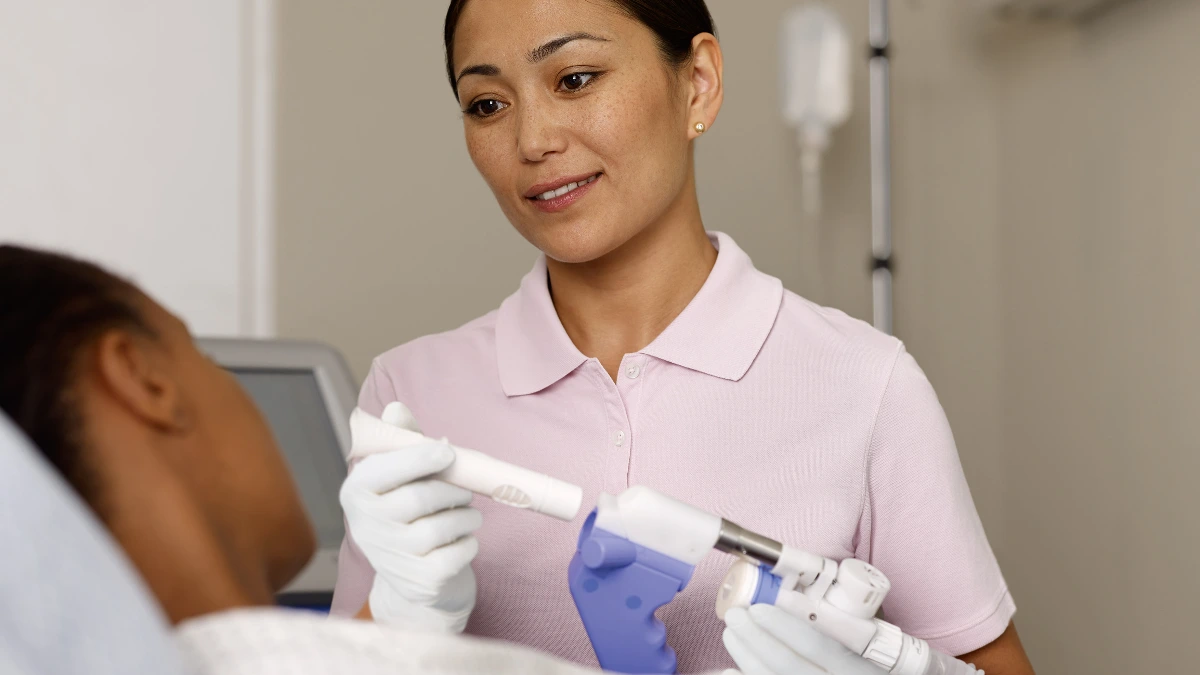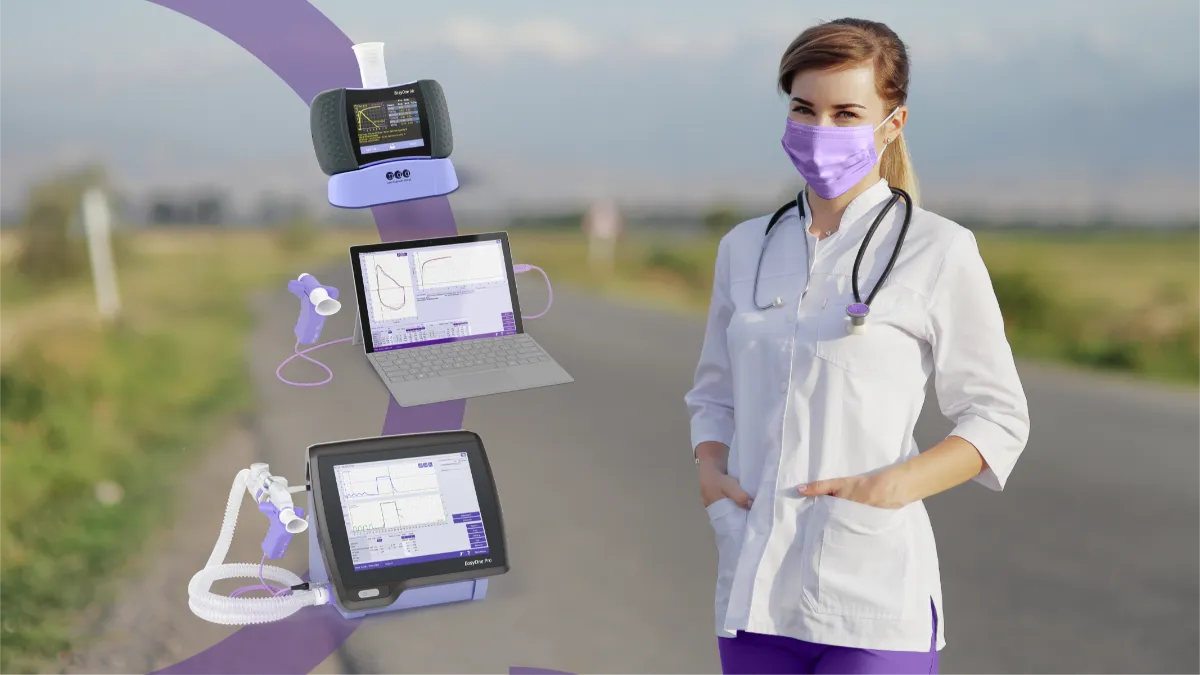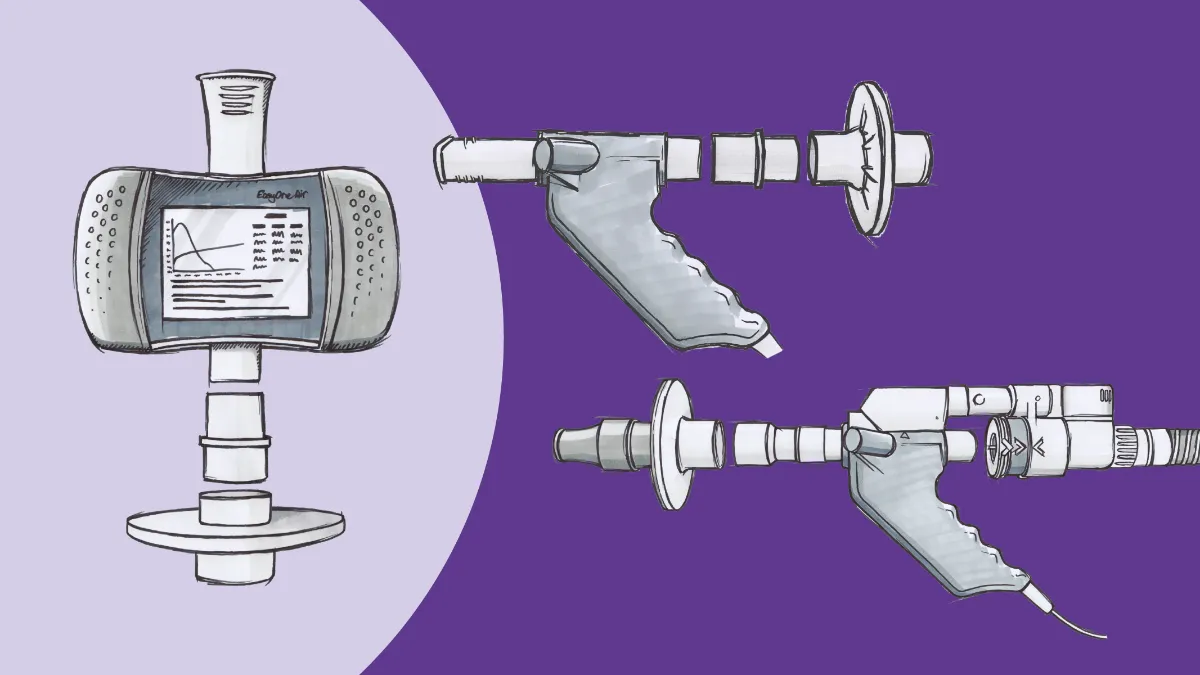What to expect during a pulmonary function test
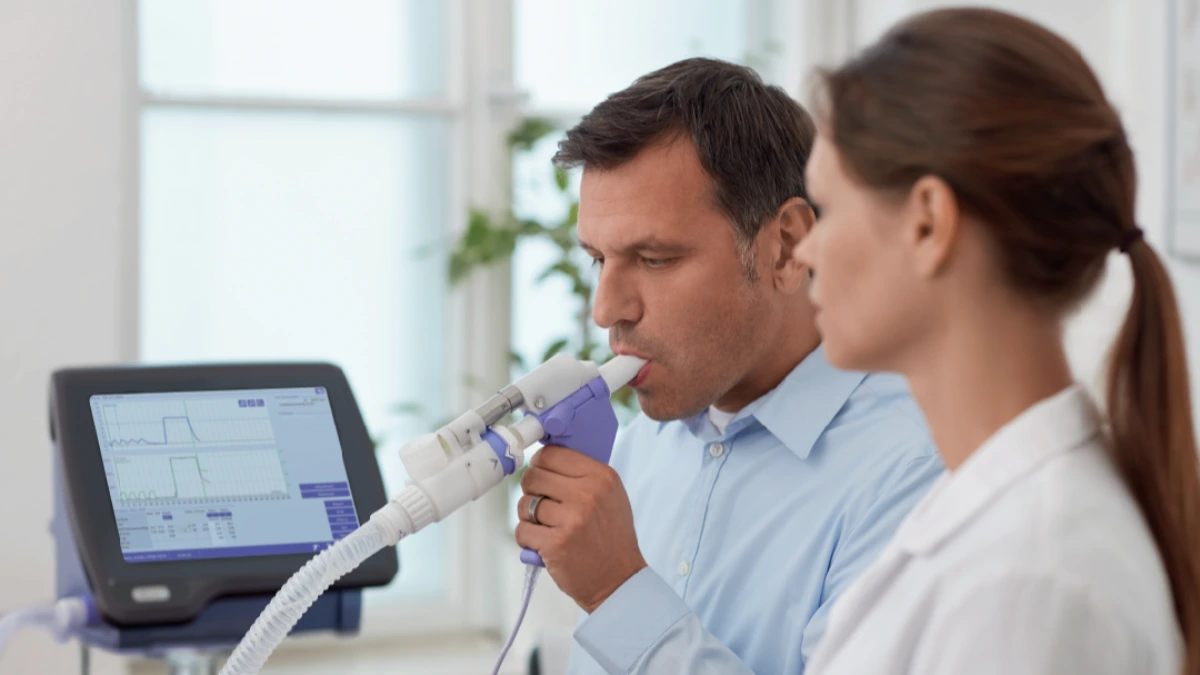
A pulmonary function test (PFT) is a noninvasive test that measures how well the lungs work. A PFT can be as simple as a spirometry test to measure airflow or could be more comprehensive and additionally include a diffusing capacity of lungs for carbon monoxide (DLCO), which measures gas exchange.1
Why are pulmonary function tests important? #
Pulmonary function tests are an essential tool for diagnosing and monitoring lung conditions. PFTs help provide a baseline measurement, measure disease severity, and assess the response to any medications or treatment for a lung condition.
Pulmonary function test types #
The type of PFT given to the patient depends on the patient’s symptoms, exposure to specific substances at work or in their surroundings, or the purpose of diagnosing and monitoring lung disease. PFTs can also be a tool to help assess whether a high-risk patient is appropriate for surgery.1
Spirometry
Spirometry is the most basic test measuring how well air flows in and out of the lungs. It can help differentiate between obstructive and restrictive lung disorders, assess disease severity, and measure response to therapy. Spirometry measurements include:
- Forced Vital Capacity (FVC) is the total volume of exhaled air during a maximal forced expiration effort after a maximal inhalation
- Forced Expiratory Volume in One Second (FEV1) is the total volume exhaled in the first second under force after a maximal inhalation
- The FVC and FEV1 ratio (FEV1/FVC) is the ratio between the two measurements, representing the percentage of the FVC that can be expired in one second
- Peak Expiratory Flow (PEF) is the maximum speed of airflow during the maximally forced exhalation
The FEV1 and FVC measurements are critical in differentiating obstructive and restrictive lung disorders. A normal FEV1 indicates that irreversible obstructive lung disease is unlikely. A normal FVC makes restrictive disease unlikely.
DLCO
DLCO is another, more advanced pulmonary function test that measures the ability of gas to transfer from the alveoli across the alveolar-capillary membrane and into the bloodstream. It’s a valuable test for monitoring and diagnosing lung disease or predicting how well a patient may tolerate surgery.
Conditions that can decrease DLCO primarily affect the pulmonary vasculature, such as primary pulmonary hypertension and pulmonary embolism. Pulmonary fibrosis and emphysema, both conditions that affect overall lung function, and heart failure, can also decrease DLCO.2
What to expect during a spirometry test #
A spirometry test usually only takes 10-15 minutes.
The test is in most cases painless for the patient, simple for a trained healthcare professional to perform, and can be done directly in the physician’s office.
Proper patient position is important for a high-quality test.
- The patient should sit upright, with feet flat on the floor and legs uncrossed.
- Loosen tight-fitting clothing
- Proper fitting dentures are a must. If the dentures are loose, have the patient remove them.
- The patient should wear a nose clip.
The healthcare professional will instruct the patient to place their lips around the mouthpiece to create a tight seal, take a deep breath, and blow into the tube as forcefully as possible. For accuracy, repeat three times.
Depending on the symptoms, the health provider usually administers a bronchodilator to open the airways and has the patient retake the test to see if the medication improves lung function.
What to expect during a DLCO test #
A DLCO test adds approximately five minutes to a spirometry test, for a total of 20-30 minutes. Each DLCO test takes about 1 minute to perform, with a 4 minute wait time between the trials, and at least two trials are needed for the test.
In the past, DLCO testing explicitly required designed equipment and complex devices, which had to be done in pulmonary laboratories. Modern PFT equipment, like the EasyOne Pro/LAB, makes DLCO testing more accessible for patients and simplifies the testing process for primary care practices.
The healthcare professional will ask the patient to breath normally. After a couple of breaths, they will ask the patient to fully exhale and afterward to fully inhale and then hold the breath for 10 seconds and then exhale to finish the complete DLCO manuever. The reading will indicate the amount of carbon monoxide that diffused from the inhaled gas into the bloodstream. The test should be repeated twice for an accurate DLCO calculation.3
Factors that affect how long a PFT will take #
A full pulmonary function test, spirometry and DLCO, should take no longer than 30-45 minutes. Some factors to consider are:
- Patient
A good PFT reading depends on a patient’s effort and ability to perform the test. Modifying techniques and using different approaches to attain an adequate, repeatable measurement is important. Proper support and feedback from the person administering the test are imperative for good results.1 - Coaching
Proper technique and effort are essential for reliable results, and effective coaching is necessary for adequate patient test performance, which can result in a shorter test time. Before the patient begins the test, the clinician should explain the procedure and provide a step-by-step demonstration of what the patient will be asked to o. It may take longer to achieve acceptable and reproducible results without adequately preparing the test subject. - Patient condition
Various patient conditions may affect the timing of the spirometry and DLCO test. For instance, a recent surgery could cause a patient to experience pain with breathing maneuvers. Additionally, if the patient ate a large meal before the test, it could cause nausea. Tight clothing could affect chest wall motion. These obstacles can delay obtaining accurate test results. - Equipment
Equipment that requires calibration and extensive cleaning between patients or tests can significantly prolong the lung function testing process. Utilizing user-friendly, low-maintenance equipment that does not require calibration can greatly simplify the testing procedure.
Conclusion #
Accuracy and ease of use are significant factors in lung function testing. With the right equipment, clinicians can concentrate on coaching patients for the best results possible, and patients will enjoy the convenience of a quick and effortless spirometry and DLCO test.
Pulmonary function testing that helps physicians diagnose sooner, treat faster, and impact patient outcomes.
Explore the EasyOne products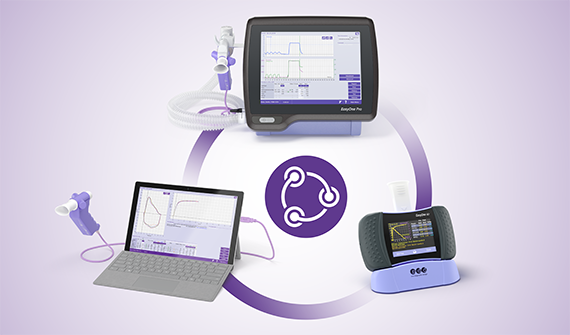
Disclaimer: The test times provided in the above blog are based on our experience with the EasyOne spirometry and PFT products.
Ruppel GL, Enright PL. Pulmonary Function Testing. Respir Care. 2012;57(1):165-175. doi:10.4187/respcare.01640 ↩︎ ↩︎ ↩︎
Modi P, Cascella M. Diffusing Capacity Of The Lungs For Carbon Monoxide. In: StatPearls. StatPearls Publishing; 2024. Accessed March 13, 2024. http://www.ncbi.nlm.nih.gov/books/NBK556149/ ↩︎
How to series: How to perform a DLCO test. ndd Medical Technologies. Accessed March 5, 2024. https://nddmed.com/blog/how-to-series-how-to-perform-a-dlco-test ↩︎
Written by

Allison DeMajistre
BSN, RN, CCRN
Allison DeMajistre is a freelance medical writer with a decade of clinical experience as a critical care registered nurse. She writes about cardiology, pulmonology, and several other medical topics. She strives to simplify complex medical information for patients and to write insightful and informative articles for health care professionals.

